Normandy, France
(Click here to go back to Home Page)
Pointe du Hoc - Point du Hoc Brochure
The American Cemetery at Omaha Beach - Arromanches - Caen Museum
---------------------------------------------------------
Pointe du Hoc is a promontory with a 100 ft (30 m) cliff overlooking the English Channel on the coast of Normandy in northern France. During World War II it was the highest point between Utah Beach to the west and Omaha Beach to the east. The German army fortified the area with concrete casements and gun pits. On D-Day (6 June 1944) the United States Army Ranger Assault Group assaulted and captured Pointe du Hoc after scaling the cliffs.
.jpg)
_______________________________________________________________________
Bomb craters are still visible all over
Pointe du Hoc
.jpg)
.jpg) _______________________________________________________________________
_______________________________________________________________________
Remains of German bunkers litter the area
.jpg)
.jpg)
.jpg)
_______________________________________________________________________
Partial view of Omaha Beach
.jpg)
.jpg)
.jpg)
.jpg)
.jpg)
.jpg)
.jpg)
.jpg)
.jpg)
_______________________________________________________________________
German artillery position
.jpg)
_______________________________________________________________________
The Pointe du Hoc American Memorial is a monument at Pointe du Hoc . The monument was created by France erected in honor of the American Second Ranger batajon which was under the command of Lieutenant - Colonel James E. Rudder.
The Pointe du Hoc American Memorial has a needle shape and is
built on the site where once stood the shooting coaching post.
The monument is protected by barbed wire, otherwise it is too
dangerous to walk around the monument. The 12 hectare large
Pointe du Hoc was in 1979 , including the monument over to the
U.S. government.
.jpg)
.jpg)
_______________________________________________________________________
Utah Beach to the west of the monument
.jpg) _______________________________________________________________________
_______________________________________________________________________
The primary lookout bunker at the point of
Pointe du Hoc
.jpg)
.jpg)
_______________________________________________________________________
Omaha Beach on the right of the
monument
.jpg)
.jpg)
_______________________________________________________________________
Heading in to the primary German
bunker
.jpg)
.jpg)
_______________________________________________________________________
A view from the German bunker
.jpg)
.jpg)
.jpg)
.jpg)
.jpg)
.jpg)
.jpg)
.jpg)
.jpg)
.jpg)
.jpg)
.jpg)
.jpg)
.jpg)
This is a brochure that I got at Point du Hoc showed that at 7:10 the USS Satterlee (DD-626),
had an important role in the DDay invasion. My dad was on that ship during DDay.
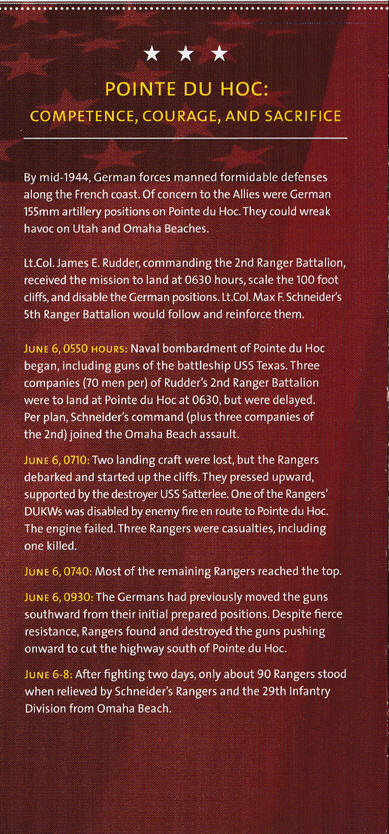
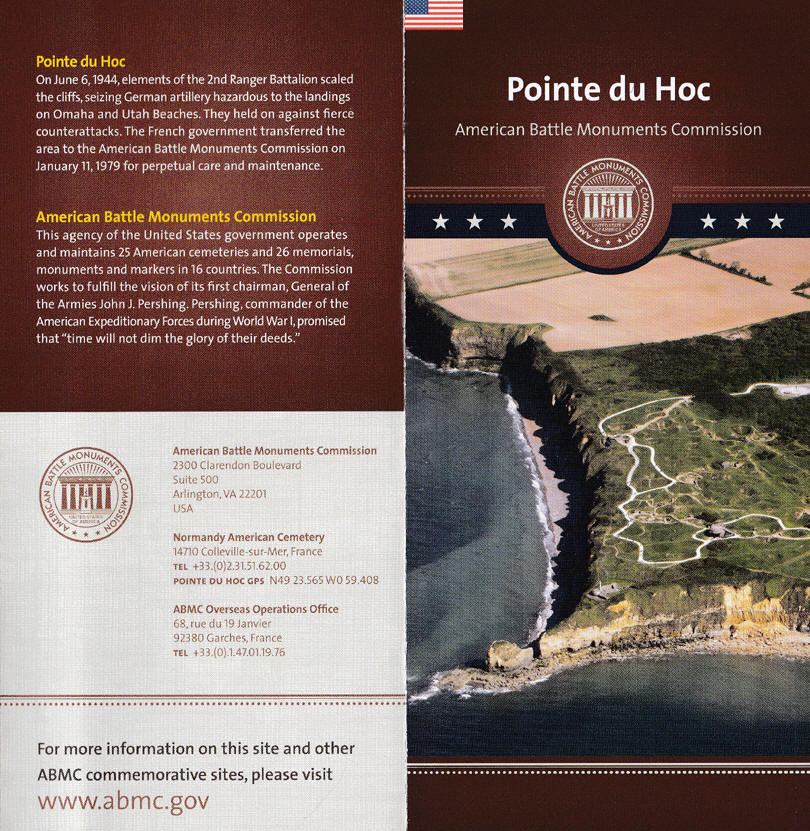
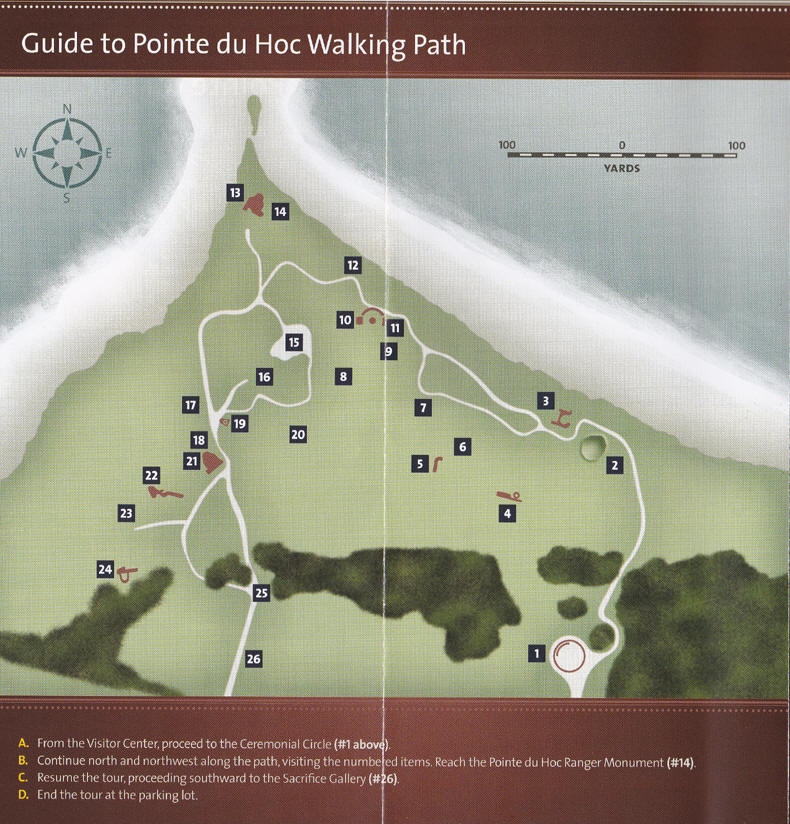
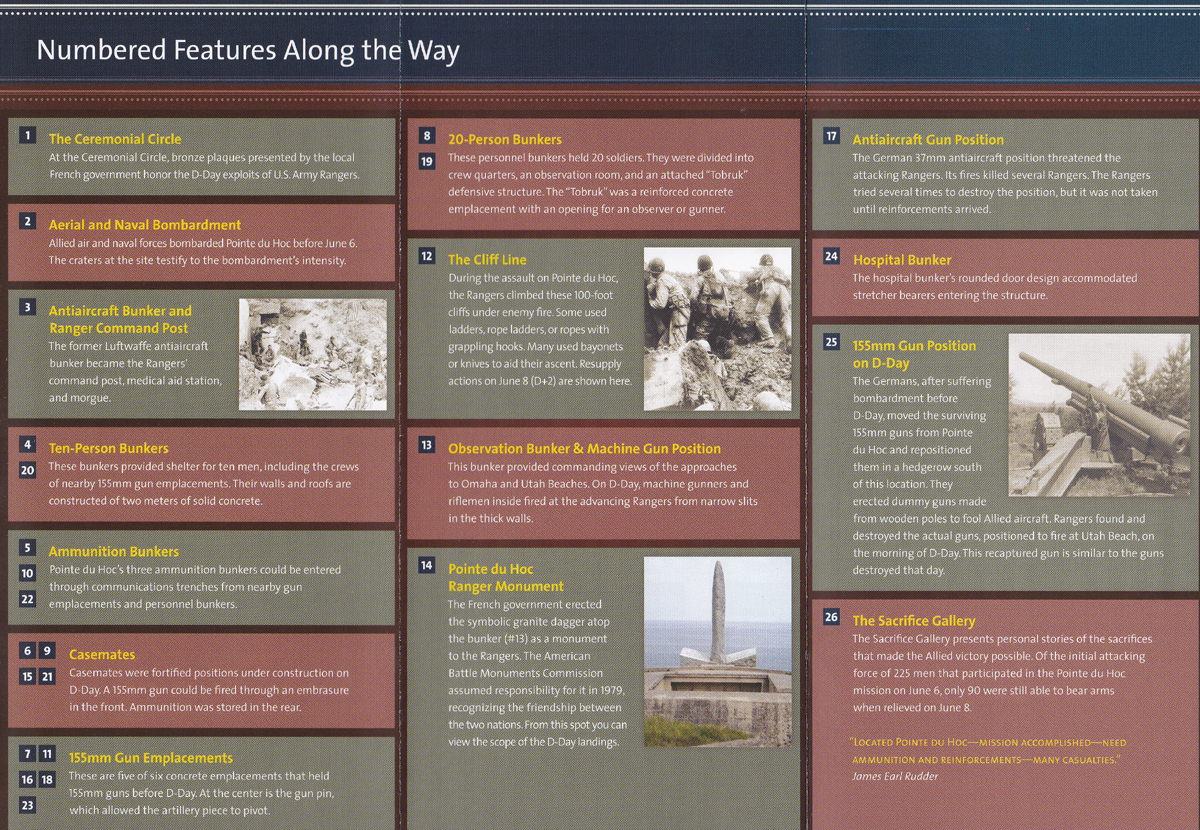
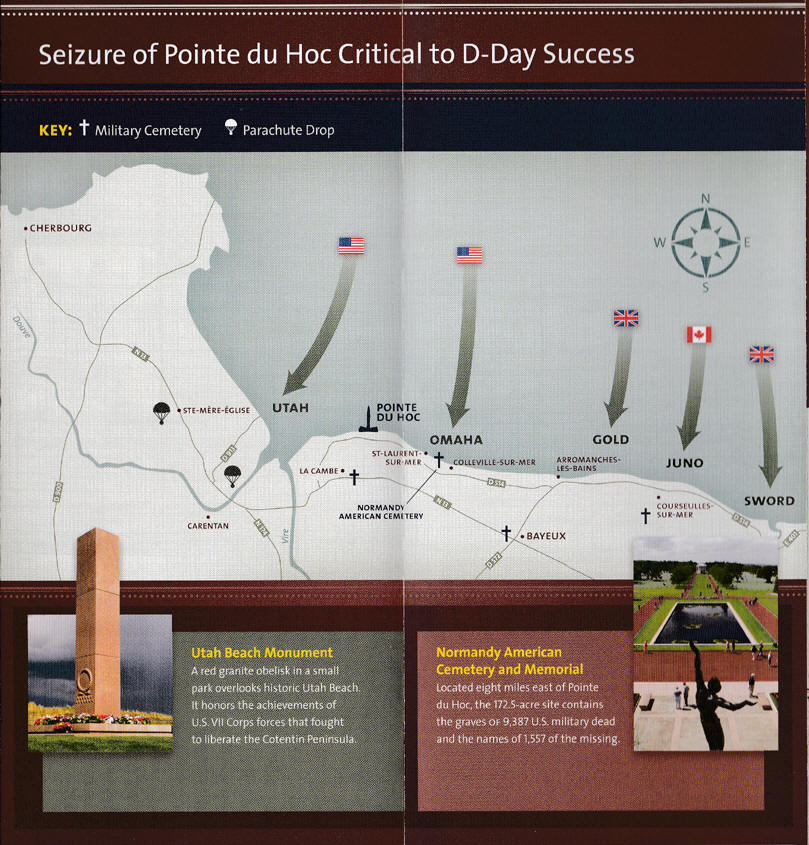 _______________________________________________________________________
_______________________________________________________________________
The American Cemetery at Omaha Beach
.jpg)
.jpg)
.jpg)
.jpg)
.jpg)
.jpg)
.jpg)
.jpg)
.jpg)
________________________________________
We had our tour on June 2. You could see they were making arrangements for the 70th anniversary on June 6.
.jpg)
________________________________________
An unknown soldier's grave
.jpg)
.jpg)
.jpg)
.jpg)
.jpg)
.jpg)
.jpg)
________________________
Arromanches is remembered as a historic place of the Normandy landings and in particular as the place where an artificial port was installed. This artificial port allowed the disembarkation of 9,000 tons of material per day.
It was on the beach of Arromanches that, during the Invasion of
Normandy immediately after D-Day, the Allies established an
artificial temporary harbour to allow the unloading of heavy
equipment without waiting for the conquest of deep water ports
such as Le Havre or Cherbourg. The port was commissioned on 14
June 1944.
British built huge floating concrete caissons which, after being
towed from England, then had to be assembled to form walls and
piers forming and defining the artificial port called the
Mulberry harbour. These comprised pontoons linked to the land by
floating roadways. One of these ports was assembled at
Arromanches and even today sections of the Mulberry Harbour
still remain with huge concrete blocks sitting on the sand and
more can be seen further out at sea.
Today, Arromanches is mainly a tourist town. Situated in a good
location for visiting all of the battle sites and War
Cemeteries, there is also a museum at Arromanches with
information about Operation Overlord and in particular, the
Mulberry harbours.
.jpg)
.jpg)
.jpg)
.jpg)
.jpg)
.jpg)
.jpg)
.jpg)
.jpg)
.jpg)
.jpg)
.jpg)
.jpg)
________________________
During the Battle of Normandy in the Second World War,
Caen was liberated in early July, a month after the
Normandy landings, particularly those by British I Corps on 6 June 1944. British
and Canadian troops had intended to capture the town on D-Day. However they were
held up north of the city until 9 July, when an intense bombing campaign during
Operation Charnwood destroyed 70% of the city and killed 2000 French civilians.
.jpg)
.jpg)
.jpg)
.jpg)
.jpg)
.jpg)
.jpg)
.jpg)
.jpg)
.jpg)
.jpg)
.jpg)
.jpg)
.jpg)
.jpg)
.jpg)
.jpg)
.jpg)
.jpg)
.jpg)
.jpg)
.jpg)
.jpg)
.jpg)
.jpg)
.jpg)
.jpg)
.jpg)
.jpg)
.jpg)
.jpg)
.jpg)
.jpg)
.jpg)
.jpg)
.jpg)
.jpg)
.jpg)
.jpg)
.jpg)
.jpg)
.jpg)
.jpg)